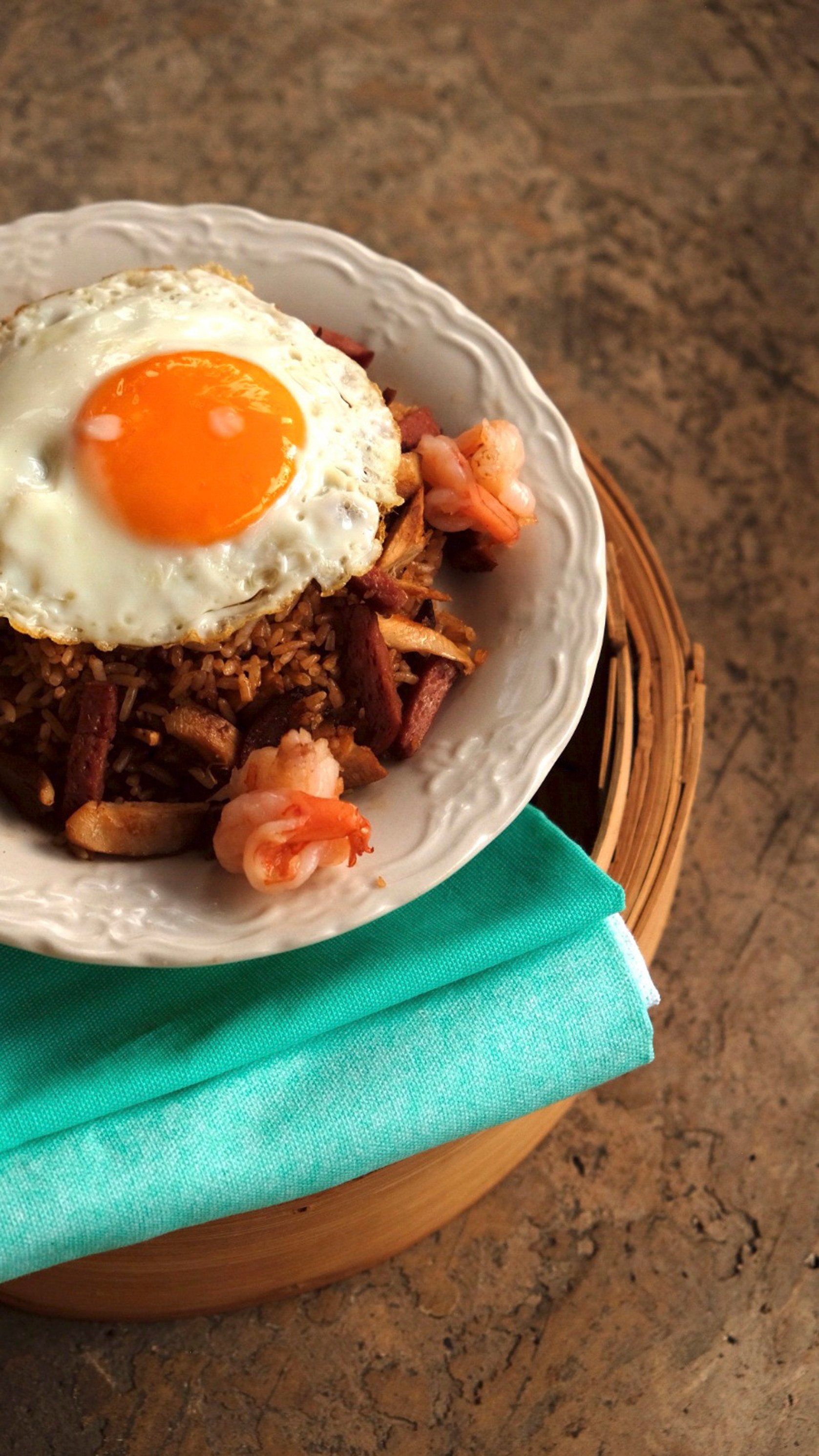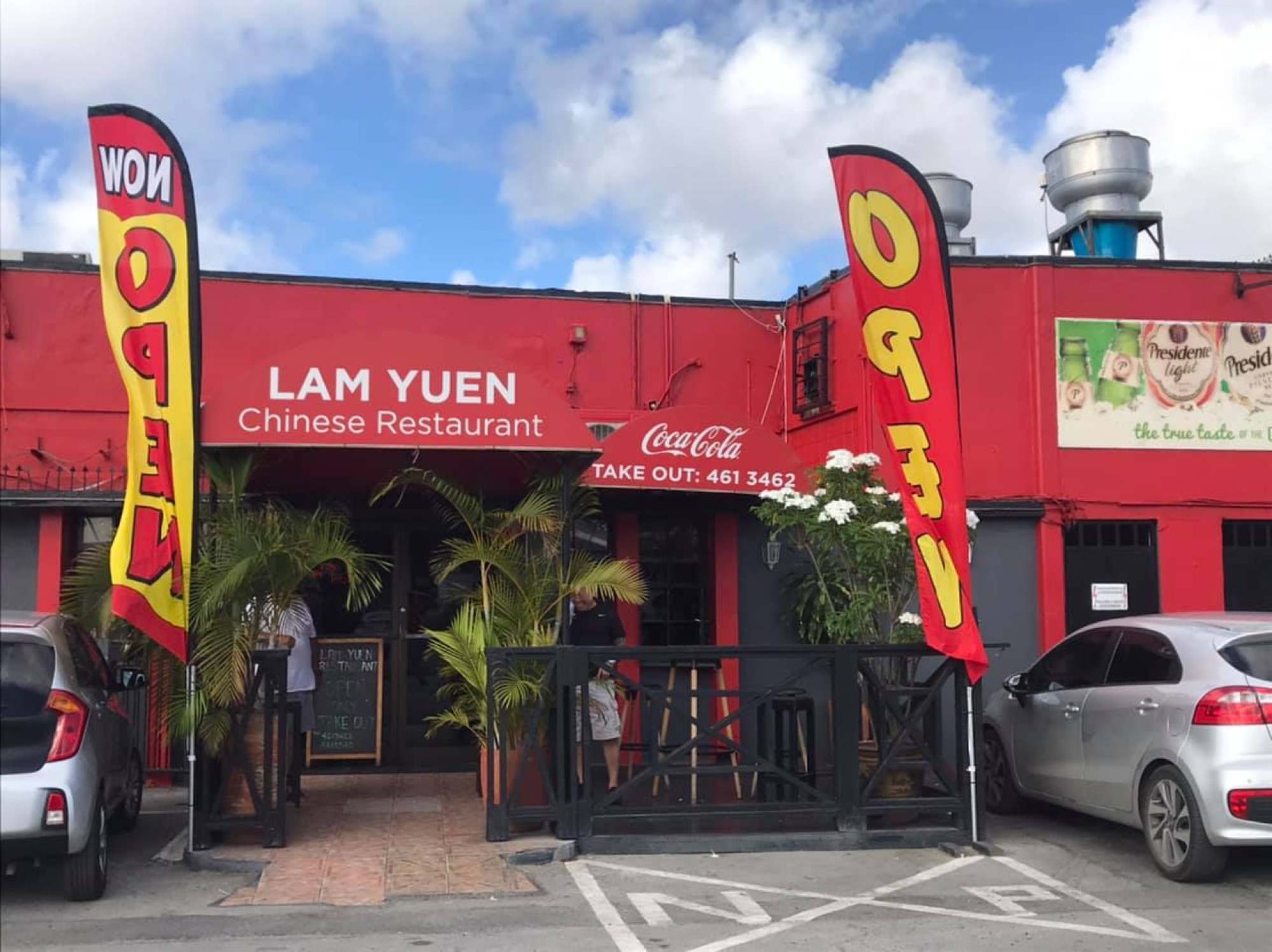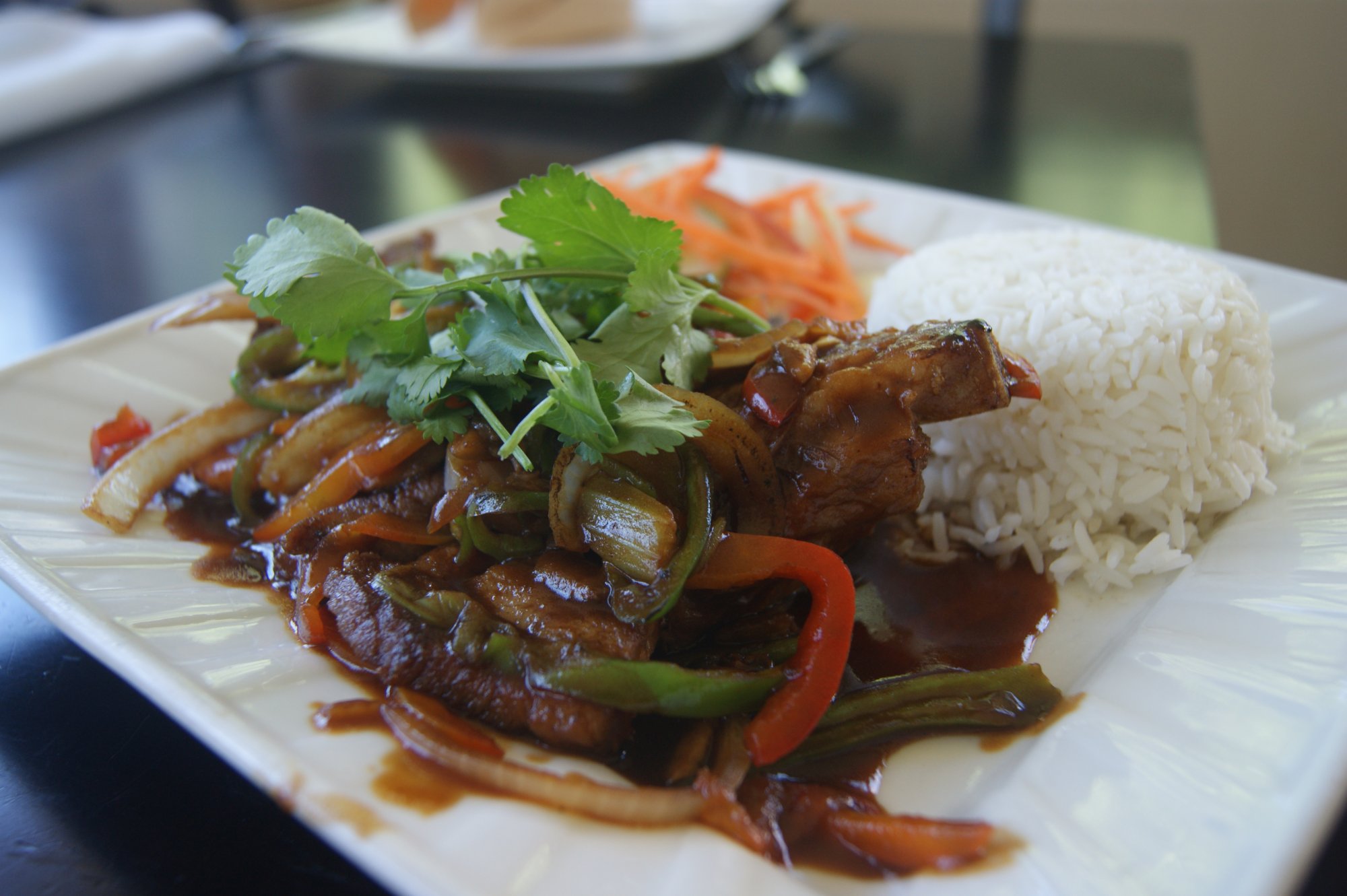
‘United Nations seafood, Four Seasons chop suey’: Chinese food in Curacao a fusion of Dutch and Caribbean influences
- Although Chinese make up only 1 per cent of the Caribbean island’s population, there are over 250 Chinese restaurants, but most don’t serve what you might think
- From Spanish-style pork chops to nasi goreng, dishes take influence from the Caribbean to Indonesia, and reflect the ingenuity of the island’s Chinese migrants
A pair of metallic gold dragons peer down from the red wall of a bustling dining room, as families enjoy generous plates of crisp roast pork, wok-smoked fried rice and seafood chow mein.
It appears to be a typical Chinese restaurant, but if you look closely at the menu you’ll find dishes such as grilled conch, tomato stewed shrimp and nasi goreng.
At the Lam Yuen Restaurant, diners enjoy a Caribbean riff on Chinese food.
One of the oldest Chinese restaurants on Curacao, Lam Yuen is in a shopping precinct on bustling Kaya C. Winkel Street, in the Dutch-ruled Caribbean island’s capital, Willemstad.

Affixed to its red and grey exterior, the restaurant’s sign is crowned by a parakeet-green Presidente beer logo that is lit up in neon red and blue at night.

The vast majority offer a Dutch Caribbean take on Chinese food (Curacao is an autonomous constituent country of the Netherlands), and these restaurants tell the story of Chinese entrepreneurship and immigration to the island.
“My family came to Curacao in 1944, during World War II. They were part of a wave of Chinese migration, mostly from the Guangdong region [in southern China],” explains Lam, who is also president of the Curacao Chinese Business Association.
Seeking a better financial future for his family, Lam’s father opened the restaurant in 1958.
How a Chinese-Jamaican’s family history quest led her to Hong Kong
The Rose Garden Curacao restaurant was also a product of hopeful immigrants. It is on tree-dotted Oude Caracasbaaiweg Street, in the Salinja neighbourhood of Willemstad, in a red building with a double-pitched Dutch-colonial-style roof.
Half its frontage is painted pale pink, perhaps in a nod to Willemstad’s famous candy-coloured buildings.
“My grandparents migrated in the 1960s,” says Andrew Ng, son of the owners, Italia and Jimmy Ng. “Back then, China was quite poor and many Chinese were immigrating, looking for better opportunities for their families.”

The first significant wave of Chinese immigration to the Caribbean occurred between the 1850s and ’60s when around 18,000 indentured workers landed, mostly in British Guiana, Trinidad and Jamaica, and then spread to other Caribbean islands, including Curacao.
After completing their contracts, some stayed and worked as cooks; a few opened their own restaurants.
As a result, “our Chinese dishes are adapted to suit the tastes of the locals”, according to Ng. “It’s the same concept as American Chinese food.”

Arguably the most popular Dutch Caribbean Chinese dish is saté ku batata – satay and potatoes. This affordable meal consists of a plate of steaming rice topped with one or two kebab sticks of chicken or pork, a generous helping of thick-cut fried potatoes and a shower of satay sauce.
The proprietors at Chinese restaurants such as Winer’s Sister – in a nondescript, tan building with an open patio, on Willemstad’s Santa Rosaweg Street – create a mildly spicy curry-based sauce instead of using the original peanut-based Indonesian sauce.

Another common menu item is Latin-influenced Spanish-style pork chops, chicken or steak. These sizeable fried slabs of protein are finished with julienned onions, bell peppers, carrots, celery, sliced ham and tomato sauce.
“My dad invented this dish for the locals,” explains Lam. “He also came up with many of the menu item names you’ll see on Curacao Chinese restaurant menus, such as United Nations seafood, Kowloon chop suey [the name chosen because it sounded good rather than because the dish, containing broccoli, carrots, onions, green peppers and meat or seafood, has any connection to Hong Kong] and Four Seasons chop suey.
“Many Chinese restaurants started copying his menu years ago.”
Back to his roots: Chinese-Jamaican Leo Lee
Dutch Caribbean Chinese food can also be found on Aruba and Bonaire, Curacao’s sisters, the three known collectively as the “ABC Islands”. This is also the case in the Netherlands, especially Rotterdam, which is known for its universities and is where many ABC Islands Chinese send their children for higher education.
Dutch universities tend to be more affordable than those in the United States, and language isn’t a problem.
“The younger generation [of Curacao Chinese] speaks Dutch and Papiamento [the local, Portuguese-based language], whereas their elders may speak only a bit of Papiamento,” explains Lam.
Chinese students pay for ‘guaranteed acceptance’ into elite US universities
Whatever language they converse in, “Our Chinese aren’t proud of [their fusion] food, although they should be”, says Gamin Bao, owner of Winer’s Sister, where bamboo plants frame the entrance and glass sliding doors open onto a sleek, modern dining area with round wooden tables.
“Most of our clientele aren’t Chinese, and our food was always meant to be a worker’s meal: cheap, filling and packed with protein and carbs.
“I fear the cuisine is dying out as more Chinese shift to running more profitable mini-markets and supermarkets.
“Luckily, for now, Dutch Caribbean Chinese food is still readily available in Curacao and it’s delicious.”

